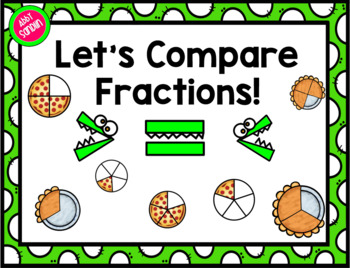Comparing Fractions PowerPoint, Student Booklet, and Story Book
Abby Sandlin
2.2k Followers
Resource Type
Standards
CCSS3.NF.A.1
CCSS3.NF.A.2
CCSS3.NF.A.3
CCSS4.NF.A.1
CCSS4.NF.A.2
Formats Included
- Zip
Pages
33 total
Abby Sandlin
2.2k Followers
What educators are saying
Great resource that is very helpful and beneficial! it was a great addition to my classroom. I will use it again next year.
Description
Introduce comparing fractions with this fun presentation, student book, and reinforce the material with a copy of the story book in your classroom library! Students will learn how to compare fractions through an easy to understand powerpoint presentation which can be accompanied with a student booklet. This book introduces concepts/vocabulary such as: comparing fractions, equivalent fractions, congruent, greater than, and less than using visual fraction models.
Included:
Powerpoint Presentation
Student Companion Booklet
Classroom Story Book
Happy Learning!
Abby Sandlin
www.teacherspayteachers.com/store/abby-sandlin
Total Pages
33 total
Answer Key
N/A
Teaching Duration
N/A
Report this resource to TPT
Reported resources will be reviewed by our team. Report this resource to let us know if this resource violates TPT’s content guidelines.
Standards
to see state-specific standards (only available in the US).
CCSS3.NF.A.1
Understand a fraction 1/𝘣 as the quantity formed by 1 part when a whole is partitioned into 𝘣 equal parts; understand a fraction 𝘢/𝑏 as the quantity formed by 𝘢 parts of size 1/𝘣.
CCSS3.NF.A.2
Understand a fraction as a number on the number line; represent fractions on a number line diagram.
CCSS3.NF.A.3
Explain equivalence of fractions in special cases, and compare fractions by reasoning about their size.
CCSS4.NF.A.1
Explain why a fraction 𝘢/𝘣 is equivalent to a fraction (𝘯 × 𝘢)/(𝘯 × 𝘣) by using visual fraction models, with attention to how the number and size of the parts differ even though the two fractions themselves are the same size. Use this principle to recognize and generate equivalent fractions.
CCSS4.NF.A.2
Compare two fractions with different numerators and different denominators, e.g., by creating common denominators or numerators, or by comparing to a benchmark fraction such as 1/2. Recognize that comparisons are valid only when the two fractions refer to the same whole. Record the results of comparisons with symbols >, =, or <, and justify the conclusions, e.g., by using a visual fraction model.





